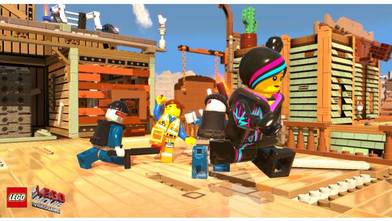|
As an Einstein Fellow at the National Science Foundation, I have spent the last month delving through research regarding best practices for instilling computational thinking skills in K-6 students so that they can be prepared to jump into computer science courses by 8th or 9th grade. Clearly students need to acquire the foundational knowledge (i.e. fundamentals of reading, writing, number sense, etc) critical to their success. However, as a computer scientist, I firmly believe that equal importance must be placed on developing advanced problem solving skills to prepare students for 21st century jobs. Almost every industry is now influenced by computer aided science and students who posses skills like critical thinking, computer simulation and modeling, and computational analysis are finding it much easier to find, and thrive, in high-level jobs. The challenge is finding ways to instill these skills using technology that is vastly different now than it was merely 10 years ago. Many educational app designers, software companies, coalitions, and educators are working diligently to provide a deliverable solution to this problem, and many of them are having great success. However, as I have been reading about all of these efforts, I could not help but to reflect on my own childhood. In reflection, I have come to two primary questions: 1) How did I learn these skills in an elementary school that had a total of a dozen computers (administrative staff included); 2) How can I make sure my two daughters get these skills in an era when the focus is increasingly on test preparedness for math and English?  The answer hit me while playing a first-person shooter on xBox One last week. While running around, trying to blast my opponents off the map (with bonus points for shooting them in the head or tricking them into stepping on a well placed land mine), I realized that the vast majority of my informal computational thinking and problem solving skills came from the endless hours I have spent playing video games. While I was not fortunate to be a kid during the tablet era, I was fortunate to cut my teeth on Dig-dug and Galaga, to be primed on Super Mario Brothers and Zelda, to be schooled in Toe-Jam & Earl and Spy vs. Spy, to hit growth spurts while beating Crash Bandicoot, to finish high school playing Halo, and to work through a slew of MMORPGs through my time in college. What did I learn in all the time I "wasted" playing those games? I learned the value of cooperation and the importance of team communication. I learned how to decompose a complex problem with dynamic variables into simpler chunks and to isolate variables to make statistically relevant guesses at what human opponents would do. I learned how to recognize patterns in puzzles but also in computer based artificial intelligence. I learned how to "know" what the computer was "thinking." In short, I realized that my time spent gaming was not time wasted; it was time spent honing problem solving, creative thinking, and computational skills. This was not time invested in "educational games." I did love Math Blaster, but given the choice, I always picked Golden Eye: 007.  Now as a father of two girls (6 and 3), I am starting to investigate how to instill these vital skills in my children. I don't think they need Computer Programmer Barbie to spark their interest...in fact I don't think that would help at all. As I have recently realized that gaming played a significant role in developing my computational skill set, along with developing an appreciation for computer science in general, I am starting to introduce my daughters to gaming. Obviously I have to be selective in the modern gaming arena. I don't want my sweethearts exposed to head-shots and general misconduct, but there are plenty of games on the market that subtly teach problem solving and pattern recognition on levels of effectiveness that I have not seen in formal school. In the last few weeks, I have introduced my six year old to the Lego Movie game on xBox One. I was hesitant because of the number of buttons on the controller and the complexity of the puzzles in the game (the player is required to instinctively switch between a myriad of available characters whose "special abilities" enable each of them to contribute a critical component to solve the puzzles that arise throughout the game). However, after playing through the free demo with her once, I was shocked to see how quickly she picked it up. I watched this morning as she grabbed the controller, navigated to the demo, and started teaching her 3-year old sister how to play. It was riveting! The first time we played together, I had to do the puzzles because she was still developing the capacity to maneuver in the environment, but today, she knew how to solve all the puzzles and was transferring those skills to her peer! Educators should be proud :) If you are looking to develop computational, critical, and creative thinking skills in young students, I am becoming a firm believer that video games can and should play a critical role. My kids will be playing...and they will like it! Further Reading Check out http://learningworksforkids.com/2012/04/5-ways-that-video-games-teach-flexibility-skills/
4 Comments
11/9/2015 12:57:56 am
Almost every industry is now influenced by computer aided science and students who posses skills like critical thinking, computer simulation and modeling, and computational analysis are finding it much easier to find, and thrive, in high-level jobs.
Reply
Michael
12/23/2015 07:24:49 am
Absolutely! Not everyone needs be a computer scientist, but computational thinking is as important in the modern era as literacy. I don't care what career path my children choose, but I want to be both literate and tech literate so that all paths are a viable option.
Reply
Michael
12/23/2015 07:26:57 am
As an educator, this one of my proudest moments with my children. As a dad, it was heartwarming just to see my two little ones playing nice :)
Reply
Leave a Reply. |
Michael StoneClick here to read about the blog's author. My BooksKeynotesCleveland Rotary Club
Innovating Education Through Community Partners NEA Foundation The Promise of Public Ed Leveraging Teacher Leadership to Increase STEM Education US Senate Briefing The Need for a National Organizing Body of Digital Fabrication NACCE California Symposium Scaling Innovation through Partnerships Volkswagen eLab Ribbon Cutting Why Digital Fabrication can't be an Option NSTA STEM Leadership Developing, Incubating, and Implementing Public/Private Partnerships that Matter Chattanooga Fab Institute Revolutionizing Learning through Digital Fabrication HCDE Future Ready Institute Launch Developing PBL Units with Business Partners STEM Fellows Celebration Community Partnerships for Teacher Leadership TSIN Summit Scaling Innovation in Schools Remake Learning Days Dig Fab in the Community America Achieves Public/Private Partnerships Panel DigiFabCon Chicago Digital Fabrication in the Modern Classroom Redesign for Student Success (San Diego) Scaling Innovation through Digital Fabrication GE Leadership Summit Leveraging Innovative Technologies for Learning Texas Open Innovation Emerging Innovations in Education Indiana University Authentic PBL FFT Leading & Learning Boston, MA Connecting Global Ed reMake Education Summit Keynote National Governor's Asc. Coding with Governors US Dept of Education Round Table with Secretary John King TSIN Summit K-12 Pathways for CS Google Headquarters Ed Foo NASA Headquarters K-12 Education Panel White House Reducing the Racial Gap in Computing Boston Museum of Science Teaching with Toys US Dept of Education MSP CS Proposition Archives
October 2018
|



